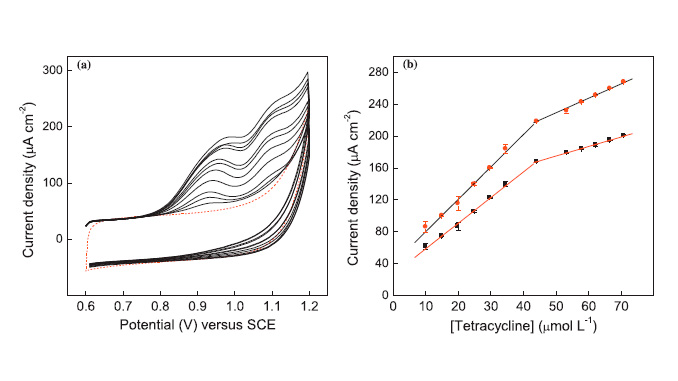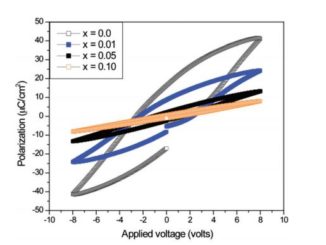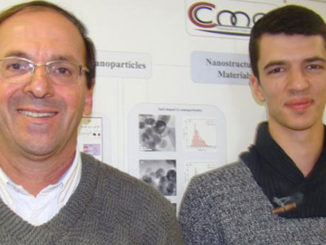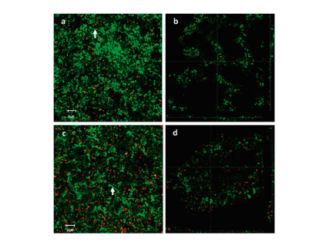
Writers: Ricardo T. Kushikawa and Marcelo R. Silva and Antonio C.D. Angelo and Marcos F.S. Teixeira
Keywords: Electrochemical sensor; Platinum nanoparticles; Voltammetric determination
Abstract: In this paper, we report the construction of an electrochemical sensing platform based on platinum nanoparticles supported on carbon (PtNPs/C) for the determination of the antibiotic tetracycline (TTC). Initially, the PtNPs/C was synthesized and characterized by powder X-ray diffraction spectroscopy and transmission electron microscopy. The effect of experimental parameters on the electrochemical behavior of the PtNPs/C coated glassy carbon electrode (PtNPs/C/GCE), including the amount of PtNPs and electroactive area, scan rate and pH, were evaluated. The electrooxidation of TTC on the PtNPs/C/GCE was investigated by cyclic voltammetry and differential pulse voltammetry, with the determination of TTC electrooxidation mechanism. Under optimum experimental conditions, the linear calibration range, detection limit, quantification and sensitivity of the PtNPs/C/GCE were 9.99–44.01 μmol L−1, 4.28 μmol L−1, 14.3 μmol L−1 and 3.32 μA L μmol−1 cm−2, respectively. Finally, the proposed electrochemical sensing platform was successfully applied to determine low TTC concentrations in urine samples, suggesting its great applicability in clinical analysis and quality control.




